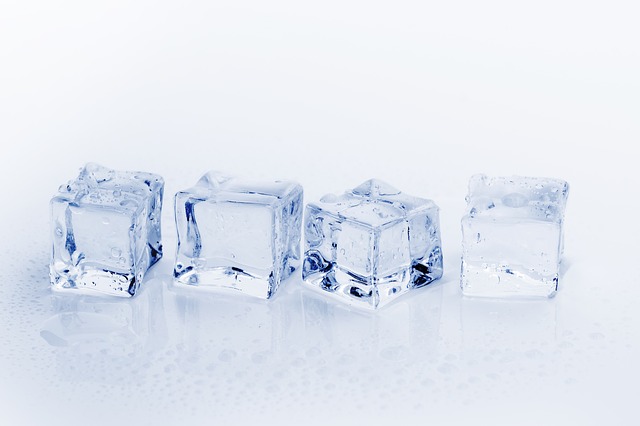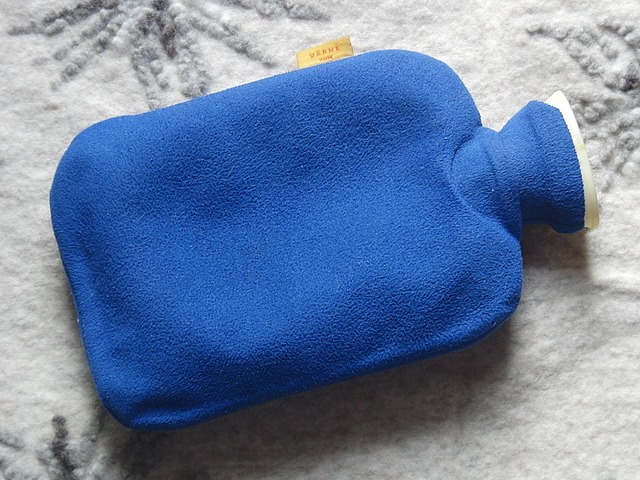I get a lot of people reaching out to me to ask about my best tips for knee pain relief. Luckily, ice and heat are really useful, and can be used as totally natural pain relieving methods for a variety of injuries. Today, we are going to talk about when you should use ice and when you should use heat for each different type of knee pain.
How Does Ice Work?
First, we need to understand how each of these treatments work. Let’s begin with ice.
Ice has long been thought of as nature’s pain killer. It has powerful effects on the human body when applied to the skin, some of which we have only recently begun to understand.

Ice has been used for many years as a form of pain relief, and there are accounts of ice being used to treat injuries in the earliest days of mankind. (Presumably, this was only possible in cold winters; luckily, nowadays we have freezers to produce this useful tool for us!)
Ice works through a couple of mechanisms:
- Ice, when applied to the skin, produces an effect called “vasoconstriction” in the blood vessels – which basically means the small vessels narrow and shut down blood flow to that area. That’s one of the reasons ice is so useful for swelling, such as after an ankle sprain.
- Ice also has an effect on the nerves around the area, dampening their signals which means we feel naturally less pain with an injury.
- Ice also encourages a flushing out of the potentially harmful chemicals around an injury site and reduces inflammation.
How Does Heat Work?
When I say heat, what I mean is a warm compress, hot water bottle or wheat cushion applied to an area of skin around an injury. You could also get these effects from a hot bath or shower, but this would be a less “targeted” way of treating your knee.

Heat works roughly in the opposite way that ice works. It, too, has a number of effects to the body when applied around an injury:
- Heat causes an effect called “vasodilation” to the blood vessels around an area – which means a widening of the vessels, increasing blood flow to an injured site. You wouldn’t want to use heat on a recently sprained ankle (unless you wanted a HUGE amount of uncomfortable swelling!)
- Heat doesn’t affect the nerves like ice does, but it does increase healthy blood flow to an area, which can speed up healing in some injuries (especially chronic, long-term ones). It also helps to flush away the nasties within the blood that invade an injured area.
- Heat has an effect on the surrounding muscles and joints whereby it “loosens” them up by making the soft tissues more “elastic”. This basically means you get more flexibility in a body part… just by heating it up! Try to stretch a muscle in the cold, then try to stretch the same muscle after a hot shower – you’ll find you can stretch much further after the heat treatment.
So, Do You Use Heat or Ice for Knee Pain?
The answer to this question depends on the main problem you have, as well as the location of the pain around your knee.
The first question to ask yourself is this: Is my main problem PAIN or STIFFNESS?
The second question is: Is my main problem area my MUSCLES or my JOINT?
Let’s talk about each scenario one by one…
If you answered with PAIN in the KNEE JOINT…
You might want to opt for ice. If your main problem is knee joint pain, I would apply the ice directly to the most painful area of the joint.
You’ll want to use a few layers between the ice and your skin. My preferred method would be:
- Take a bag of frozen peas from the freezer
- Wrap a thin towel around them
- Dampen the towel slightly, then apply to the painful area for 15 minutes
- Remove the peas/towel and let the area heat back up to its natural skin temperature
- You can then apply the peas/towel again. There is no limit to how many times you can do this.
- Always look out for any signs of ice burn on your skin and remove immediately if you see or feel anything.
If you answered with PAIN in the MUSCLES
When we talk about pain in the knee muscles – what we’re referring to are the major muscles around the knee joint.
These are called the quadriceps (or “quads” for short) and the hamstrings. The quads are at the front of your thigh, while the hamstrings are at the back of your thigh.
You can see the knee muscles in the image below:

You might want to try alternating between heat and ice on the knee muscles if your main symptom is muscle pain.
If you applied ice alone to your knee muscles, you might get some effective pain relief, but I found that my clients complained of worsening stiffness when they treat their knee muscles with just ice. For this reason, I would suggest you try for the best of both worlds and get the pain relieving effects of ice AND the mobility improvement that heat brings.
The other advantage of trying both is that you will get the chance to feel which one works best for YOU! As everyone is different, it’s important to take note of how you feel after each treatment.
To use this method:
- Take a bag of frozen peas from the freezer
- Wrap a thin towel around them
- Dampen the towel slightly, then apply to the painful area for 15 minutes
- Remove the peas/towel
- Take a hot water bottle (make sure it isn’t hot enough to burn the skin)
- Apply it immediately to your knee muscles, where the ice was earlier
- Keep it there for 15 minutes, then remove
- Go back to the peas/ice – and repeat the process as many times as you need
- Always look out for any signs of ice or heat burn on your skin and remove immediately if you see or feel anything.
If you answered with STIFFNESS in the KNEE JOINT
If stiffness in the knee joint was a person’s main symptom, providing there isn’t much swelling and their pain levels are generally low, I would opt for applying heat to the affected knee joint.
This would encourage better mobility for the knee joint and let you walk further and stand more easily.
To use this technique, follow this method:
- Start sitting comfortably
- Take a hot water bottle (make sure it isn’t hot enough to burn the skin)
- Apply it immediately to your stiff knee
- Keep it there for 15 minutes, then remove
- Allow the skin to cool to a natural temperature, then repeat the process
- Always look out for any signs of heat burn on your skin and remove immediately if you see or feel anything.
If you answered with STIFFNESS in the KNEE MUSCLES
Heat, heat and more heat. Honestly, the best results I’ve seen come when someone has applied (sensible!!) heat to the knee muscles to allow better movement and less of that horrible can’t-bend-your-knee sensation.
For best effects, use this method:
- Start sitting in a chair
- Take a hot water bottle (make sure it isn’t hot enough to burn the skin)
- Slip it over your thigh and apply it to the stiffest area
- Keep it there for 15 minutes, then remove
- Allow the skin to cool to a natural temperature, then repeat the process
- Always look out for any signs of heat burn on your skin and remove immediately if you see or feel anything.
Summary
Ice and heat are both phenomenal tools that are easily applied to help recovery from an injury. However, both heat and ice should only be thought of as temporary measures when you’re suffering with a knee injury.
Experts recommend that you get an assessment by a qualified knee pain expert, such as our specialists at HT Physio, if you’ve suffered with your knee for longer than 2 weeks.
Where do we recommend you start? A great place to begin would be to instantly download your FREE copy of our knee pain guide: “5 Expert Tips to Stop Knee Pain” below:
Click HERE to download your free copy of the knee pain guide!

Alternatively, if you are in the Farnham or Surrey area, contact us below for information about booking an appointment for some expert help with your knee:


